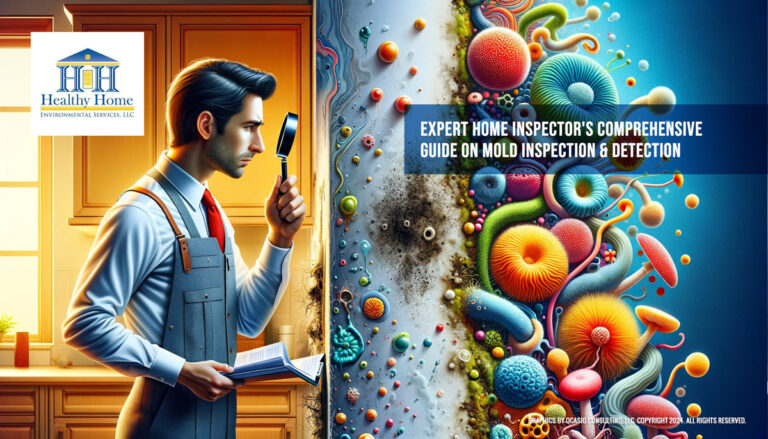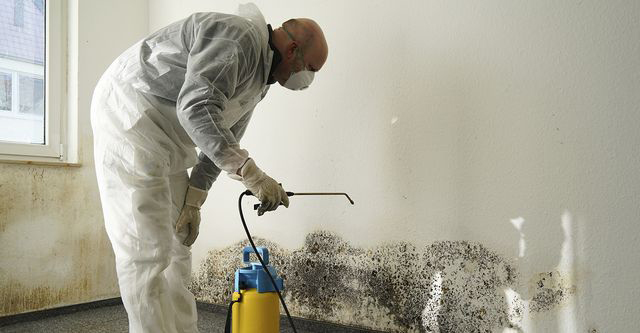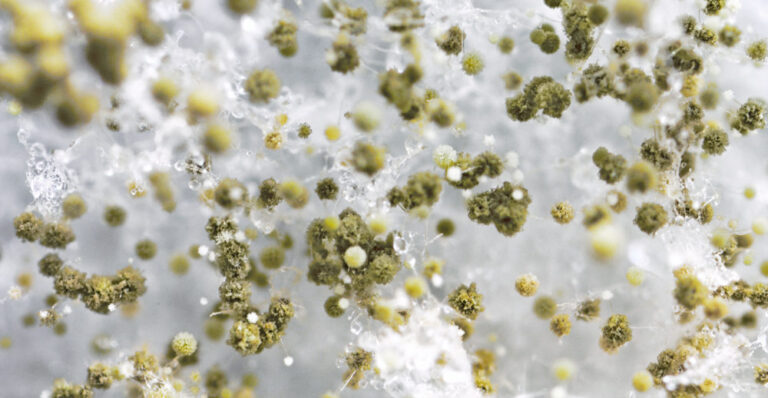Unlocking the Mysteries of Your Home: What to expect with residential mold inspection and testing
A residential mold inspection is an essential step in maintaining a healthy and safe living environment in your home. Mold growth can occur in various areas, including hidden spaces and areas affected by water damage.
By conducting a thorough mold inspection, you can identify the presence of mold, assess the extent of mold growth, and determine the appropriate remediation measures.
In this article, we will guide you through the process of residential mold inspection and testing, providing insights into the importance of hiring a professional mold inspector, understanding the mold inspection process, interpreting mold test results, and preventing future mold problems in your home.
By unlocking the mysteries of your home’s mold issues, you can take proactive steps to ensure the well-being of your family and maintain a healthy indoor environment.
Key Takeaways:
- Residential mold inspection is crucial for maintaining a healthy home environment.
- Hiring a professional mold inspector is important to ensure accurate and comprehensive assessment.
- The mold inspection process involves visual inspection, mold testing, and expert analysis.
- Interpreting mold test results helps identify the type and level of mold in your home.
- Preventive measures can be taken to reduce the risk of future mold problems.
Introduction to Residential Mold Inspection

Welcome to our guide on residential mold inspection! In this section, we will provide an introduction to the importance of mold inspection in your home. Mold growth can pose serious health risks and cause structural damage if left unaddressed. By conducting a thorough mold inspection, you can identify and address mold issues before they become a major problem.
A residential mold inspection involves a comprehensive assessment of your property to identify areas of mold growth, assess the severity of the mold problem, and determine the appropriate remediation measures. This process may include both visual inspection and mold testing to get a complete picture of the mold situation in your home.
During a visual inspection, a professional mold inspector will carefully examine your home, including hidden spaces and areas affected by water damage, to identify any visible signs of mold growth. They will look for clues such as musty odors, discoloration on walls or ceilings, and damp or humid areas where mold is likely to thrive.
Mold testing is another essential component of a residential mold inspection. Various testing methods can help determine the type and concentration of mold spores in your home, providing valuable information for mold remediation efforts and assessing potential health risks.
By understanding the basics of residential mold inspection, you can take proactive steps to ensure a mold-free living environment. In the next sections, we will explore why it is important to consider hiring a professional mold inspector, the detailed mold inspection process, how to interpret mold test results, and the costs associated with mold inspection. Let’s dive in and unlock the mysteries of mold in your home!
Why Consider a Professional Mold Inspection?

In order to effectively address mold issues in your home, it is crucial to consider hiring a professional mold inspector. While you may be tempted to take on the task yourself, there are several compelling reasons why it is best to leave mold inspection to the experts.
Signs of Mold vs. Visible Mold: Identifying the Silent Invader
When it comes to mold, not all signs are obvious. While visible mold growth is a clear indication of a problem, there are often more subtle signs that mold may be present in your home.
These signs can include musty odors, water stains, discoloration on walls or ceilings, and an increase in allergy symptoms among residents. A professional mold inspector has the expertise to identify both visible and hidden signs of mold, ensuring thorough detection and assessment.
When Mold is Present but Not Visible: Understanding Hidden Dangers
Mold can thrive in hidden areas of your home, such as behind walls, under flooring, or in attics and crawl spaces. Even if you cannot see mold growth, it does not mean it is not present. Mold spores can circulate through the air and pose a risk to your health, even without visible signs.
A professional mold inspector knows where to look for hidden mold and has the tools and techniques to detect its presence, helping to uncover potential hidden dangers that may otherwise go unnoticed.
Hire a Professional: Why DIY Isn’t Enough for Mold Problems
While it may be tempting to attempt a DIY mold inspection, it is important to recognize the limitations of this approach. Mold inspection requires specialized knowledge, equipment, and techniques that a professional mold inspector possesses. They have the training and experience to accurately assess the extent of mold growth, identify the underlying causes, and recommend appropriate remediation measures.
Trying to handle mold problems on your own can lead to inadequate detection, ineffective remediation, and a higher risk of recurring mold issues. Hiring a professional mold inspector ensures a comprehensive and reliable assessment of your mold problem, giving you peace of mind and confidence in the results.
Understanding the Mold Inspection Process

In order to effectively address mold issues in your home, it is essential to understand the mold inspection process. By following a systematic approach, you can identify the presence of mold, assess its extent, and take appropriate remediation measures.
This section will provide you with insights into the different aspects of the mold inspection process, including visual inspection, mold testing types, and expert techniques for comprehensive analysis.
Visual Inspection: The First Step in Mold Detection
A visual inspection is the initial step in the mold detection process. A professional mold inspector will thoroughly examine your home, paying close attention to areas prone to mold growth, such as basements, attics, bathrooms, and areas affected by water damage.
They will search for visible signs of mold, such as discolored walls or ceilings, musty odors, and presence of mold spores. A comprehensive visual inspection allows the inspector to determine the extent of the mold problem and develop a targeted remediation plan.
Mold Testing Types: Deciphering the Different Methods
In addition to visual inspection, mold testing is an important tool for assessing mold growth in your home. There are different types of mold testing methods available, each with its own advantages and limitations.
Some common mold testing methods include air sampling, surface sampling, and bulk sampling. Air sampling involves collecting air samples to measure the concentration of mold spores in the indoor environment. Surface sampling involves taking swab or tape samples from visible mold growth for laboratory analysis.
Bulk sampling involves collecting physical samples of materials suspected to be contaminated with mold. By deciphering the results of mold testing, a professional mold inspector can provide a comprehensive analysis of the mold problem in your home.
Inspect for Mold: Expert Techniques for Comprehensive Analysis
Expert mold inspectors utilize various techniques to inspect for mold and ensure a comprehensive analysis of mold growth in your home. These techniques may include the use of moisture meters to detect areas of excess moisture that can contribute to mold growth. Thermal imaging cameras may also be used to identify hidden sources of moisture and potential mold growth. By employing these expert techniques, mold inspectors are able to provide a thorough assessment of the mold situation in your home and develop effective remediation strategies.
The mold inspection process involves a combination of visual inspection, mold testing, and expert techniques that allow for a comprehensive analysis of mold growth in your home. By understanding the different aspects of the mold inspection process, you can take proactive steps to address mold issues and create a healthy living environment for you and your family.
Interpreting Mold Test Results

In this section, we will discuss how to interpret mold test results from your residential mold inspection. Understanding the results of mold testing is crucial for determining the extent of mold growth and its potential impact on your home’s air quality. With this knowledge, you can take appropriate actions to protect your family’s health and maintain a safe living environment.
Type of Mold Detected: What Your Results Mean for Your Home
When mold testing is conducted, it identifies the specific type of mold present in your home. Each type of mold has its unique characteristics and potential health effects. By understanding the type of mold detected, you can assess the potential risks associated with it, as certain types of mold are more harmful than others.
For example, if Stachybotrys chartarum, commonly known as black mold, is detected, it signifies a potentially serious health hazard. Black mold releases mycotoxins that can cause respiratory problems, allergic reactions, and other adverse health effects. On the other hand, other types of mold, such as Cladosporium or Penicillium, may have less severe health implications.
Knowing the type of mold detected allows you to make informed decisions regarding remediation and measures to improve air quality in your home.
Level of Mold: Assessing Your Home’s Mold Exposure Risk
The level of mold detected in your home is an important factor in determining the severity of the mold problem and potential health risks. Mold levels are typically measured in two ways: spore count and visual assessment.
The spore count indicates the concentration of mold spores in the air. High spore counts suggest a higher level of mold growth and increased mold exposure risk. On the other hand, a visual assessment considers the visible mold growth and its extent in different areas of your home. This assessment helps determine the severity of the mold problem and guides the remediation process.
Understanding the level of mold in your home allows you to prioritize remediation efforts and take appropriate measures to reduce mold exposure for your family.
Mold Spores and Indoor Air Quality: Connecting the Dots
Mold spores are microscopic particles released by mold colonies as part of their reproduction process. These spores can become airborne and circulate in your home, potentially causing indoor air quality issues. Inhaling mold spores can trigger allergies, respiratory problems, and other health issues.
Interpreting your mold test results helps you connect the dots between the presence of mold, the level of mold spores in your home, and its impact on indoor air quality. By understanding this connection, you can take appropriate measures to improve ventilation, use air purifiers, and mitigate mold growth to maintain a healthy indoor environment.
How Much Does a Mold Inspection Cost?

In this section, we will delve into the cost aspect of residential mold inspection. It’s important to understand the factors that can affect the cost of a mold inspection. By being aware of these factors, you can make informed decisions and budget accordingly.
Mold Inspection Cost: Factors Affecting the Price Tag
When it comes to mold inspection cost, several factors come into play. These factors can vary depending on the size of the property and the extent of the mold problem. Here are some considerations that can affect the cost:
- The size and layout of your home: Larger homes may require more time and resources for a thorough inspection.
- The extent of the mold problem: If the mold growth is widespread or hidden in hard-to-reach areas, it may require more effort to inspect and assess.
- The accessibility of the affected areas: Mold found in difficult-to-access areas, such as crawlspaces or attics, may require additional time and resources for inspection.
- The location of the property: Regional variations in labor and material costs can impact the overall cost of a mold inspection.
By considering these factors and discussing them with a professional mold inspector, you can get a better understanding of the cost involved in your specific situation.
Get a Mold Inspection Quote: Preparing Your Budget
Before getting a mold inspection, it’s essential to obtain a quote from a reputable mold inspection company. Requesting a quote will give you a better idea of the cost you can expect. Be sure to provide accurate information about your property and any concerns you may have.
During the quote process, consider asking the following questions:
- What is included in the mold inspection service?
- Are there any additional costs for testing or laboratory analysis?
- Will the mold inspection report be provided? If so, what information does it contain?
- Is there a warranty or guarantee offered for the inspection?
By obtaining a mold inspection quote and discussing the details with the company, you can prepare your budget accordingly and ensure there are no surprises.
Cost of Mold Inspection vs. Mold Removal: Evaluating the Investment
It’s important to remember that the cost of a mold inspection is separate from the cost of mold removal. While a mold inspection is focused on identifying and assessing the presence of mold in your home, mold removal involves the remediation and removal of mold-infested materials.
The cost of mold removal can vary significantly depending on the extent of the mold growth, the affected areas, and the necessary remediation methods. It’s essential to consider both the mold inspection cost and the potential cost of mold removal when evaluating the investment required to address mold issues in your home.
By understanding the cost considerations of a mold inspection, including the factors affecting the price tag, obtaining a mold inspection quote, and evaluating the investment required for mold removal, you can make informed decisions that align with your financial resources.
Removing Mold: Next Steps After Detection

In this section, we will explore the next steps to take after detecting mold in your home. It’s important to address mold issues promptly to ensure a healthy and mold-free living environment.
Professional Mold Remediation: When and Why It’s Necessary
When dealing with a significant mold problem or extensive mold growth, it is crucial to involve professionals in the remediation process. Professional mold remediation experts have the knowledge, skills, and specialized equipment to safely and effectively remove mold from your home. They can assess the extent of the mold damage, identify the source of moisture, and develop a comprehensive remediation plan tailored to your specific situation. By entrusting the task to professionals, you can ensure thorough mold removal and minimize the risk of mold recurrence.
Prevent Mold Growth in Your Home: Proactive Measures to Keep Mold at Bay
Preventing mold growth is essential to maintaining a mold-free home. By taking proactive measures, you can create an inhospitable environment for mold and reduce the risk of future mold problems. Here are some steps you can take to prevent mold growth:
- Control indoor humidity levels: Keep indoor humidity below 60% by using dehumidifiers or air conditioners in humid areas.
- Address water leaks promptly: Repair any leaks in your plumbing, roof, or windows to prevent moisture buildup.
- Improve ventilation: Ensure proper ventilation in bathrooms, kitchens, and laundry rooms to reduce humidity and moisture.
- Use mold-resistant materials: Opt for mold-resistant paint, drywall, and insulation in areas prone to moisture.
- Keep your home clean and dry: Regularly clean and dry any areas prone to dampness, such as bathrooms and basements.
Remove the Mold: Choosing the Right Approach for Your Home
When it comes to removing mold, the appropriate approach depends on the extent of the mold infestation and the affected surfaces. Here are some common methods for removing mold:
- Surface cleaning: For small areas of mold on non-porous surfaces, such as tile or glass, surface cleaning with a mixture of water and detergent can be effective.
- Bleach solution: A bleach solution can be used to remove mold from hard non-porous surfaces. However, bleach may not be suitable for all surfaces and can emit harsh fumes.
- Mold removal products: There are various mold removal products available on the market that are specifically designed to eliminate mold. These products come in different forms, such as sprays, foams, or gels, and should be used according to the manufacturer’s instructions.
- Professional mold remediation: For extensive mold growth or difficult-to-reach areas, professional mold remediation is highly recommended. Professional mold remediation companies have the expertise and equipment to safely and effectively remove mold from your home.
By choosing the right approach for mold removal and following proper remediation techniques, you can effectively eliminate mold and restore a healthy living environment in your home.
Preventing Future Mold Problems in Your Home

In this section, we will focus on preventing future mold problems in your home. By taking proactive measures and implementing preventive strategies, you can maintain a healthy indoor environment and reduce the risk of mold growth. Regular home inspection for mold is an essential part of this process. Let’s explore some simple tips and strategies to prevent mold and improve indoor air quality.
Prevent Mold: Simple Tips for Maintaining a Healthy Indoor Environment
To prevent mold growth, it’s important to maintain a healthy indoor environment. Here are some simple tips:
- Keep your home clean and dry, paying close attention to areas prone to moisture, such as bathrooms, kitchens, and basements.
- Fix any leaks or water damage promptly.
- Ensure proper ventilation in your home, including using exhaust fans in bathrooms and kitchens.
- Monitor humidity levels and keep them below 50% by using dehumidifiers if necessary.
- Regularly clean and dry items that can harbor mold, such as carpets, rugs, curtains, and shower curtains.
Improving Indoor Air Quality: Strategies to Reduce Mold Risk
Improving indoor air quality is crucial for reducing mold risk. Here are some strategies to consider:
- Use air purifiers with HEPA filters to remove mold spores and other pollutants from the air.
- Keep indoor plants to a minimum, as they can contribute to high humidity levels.
- Open windows and doors whenever possible to promote air circulation.
- Regularly clean and replace air filters in your HVAC system.
Regular Home Inspection for Mold: Staying One Step Ahead of Mold
A regular home inspection for mold is crucial for staying one step ahead of potential mold issues. By detecting mold growth early on, you can take prompt action to prevent further damage. Consider hiring a professional mold inspector to conduct regular inspections and ensure a thorough assessment of your home. A professional mold inspector has the expertise and knowledge to identify hidden mold and provide recommendations for remediation.
Remember, prevention is key when it comes to mold. By implementing these preventive measures and scheduling regular home inspections for mold, you can create a mold-resistant home and maintain a healthy indoor environment for you and your family.
Conclusion
In conclusion, residential mold inspection and testing play a crucial role in maintaining a healthy living environment. By conducting a thorough mold inspection, you can identify the presence of mold and assess its extent, enabling you to take appropriate remediation measures. We have emphasized the importance of hiring a professional mold inspector, as they possess the expertise and knowledge to detect hidden mold and ensure a comprehensive analysis.
Throughout this article, we have highlighted the significance of understanding the mold inspection process and interpreting mold test results. By familiarizing yourself with these aspects, you can make informed decisions regarding the potential health risks and appropriate actions to take. It is essential to connect the dots between mold growth and indoor air quality to safeguard the well-being of your family.
Prevention is key to avoiding future mold problems in your home. By implementing simple tips to maintain a healthy indoor environment and improve air quality, you can reduce the risk of mold growth. Regular home inspections for mold will allow you to stay one step ahead and address mold issues before they become significant problems.
By unlocking the mysteries of mold in your home and taking proactive steps, you can ensure the well-being of your family and enjoy a mold-free living space. Remember, a healthy home is a happy home!
FAQs
Learn about Unlocking the Secrets to Pristine Air: Allergen Testing in Central Florida Homes






